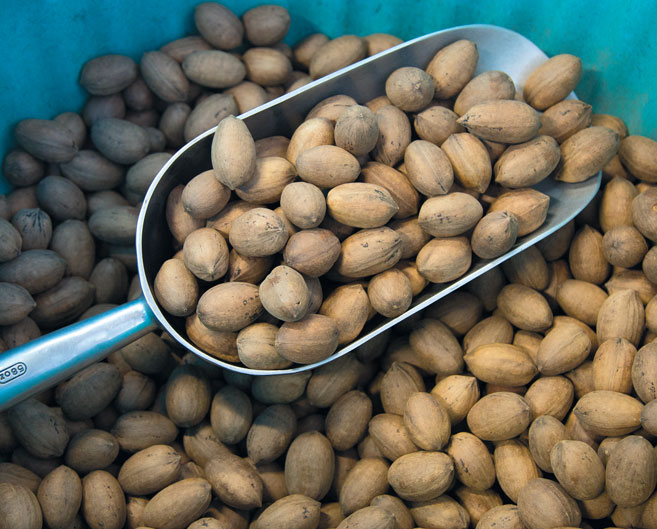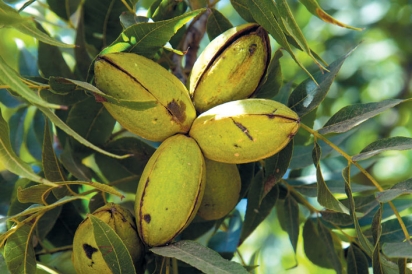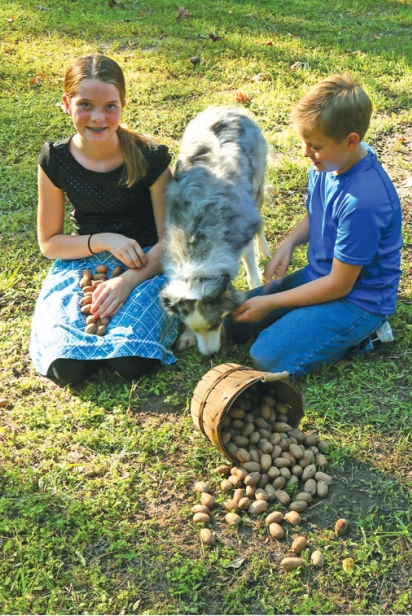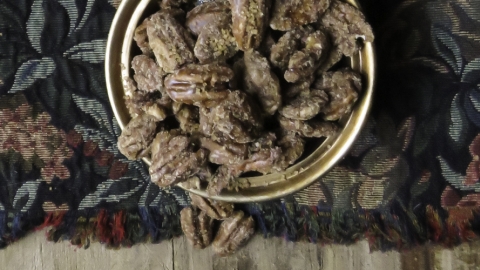Precious Plentiful Pecans
In our hearts as well as on our palates, no nut can compare with the official state nut of Texas, the lordly pecan
The sun has barely breached the horizon when I round the bend and first see the massive tree, its ancient, gnarled branches illuminated by shafts of sunlight. I’ve come to Washington-on-the-Brazos State Park specifically to see this celebrated specimen, the La Bahía Pecan, to whet my excitement for Texas’ impending pecan harvest season, which runs from October through January.
The tree takes its name from the La Bahía Road, an east-west trail through southwestern Louisiana and southeastern Texas that was known as early as 1690. La Bahía Road crossed the Brazos River near where this tree sprouted in the early 1820s, at the spot where Andrew Robinson operated a ferry service and ranked among the first settlers of what would become Stephen F. Austin’s colony at Washington-on-the-Brazos. Remarkably, La Bahía’s nearest genetic relative is 900 miles away in Jaumave, Mexico … oh, the stories this tree could tell! The interpretive sign near the tree posits that perhaps a pecan fell from a saddlebag or wagon of Mexican travelers passing through, but I’ll pose a different theory for your consideration in a bit.
Then as now, groves of pecans stretch to the horizon along the Brazos River both to the north and south of me, as they do along many of our state’s rivers. Since a pecan tree requires about 200 gallons of water per day throughout most of the year, they thrive in riparian zones, and have since prehistoric times. Native Americans would plant even more seedlings along their riverine migration routes to ensure a future food source, which along with prickly pear tunas and buffalo meat comprised most of their diet from autumn into winter.
By the time the settlers came through, the pecan trees were so plentiful that pioneers felled the heavily laden specimens outright, or would stand on a low branch, cut off all the other branches to strip the nuts, and leave countless trees to die. By the dawn of the 20th century, the pecan faced extirpation in its native Texas soil.











